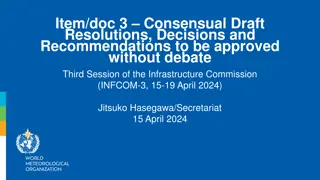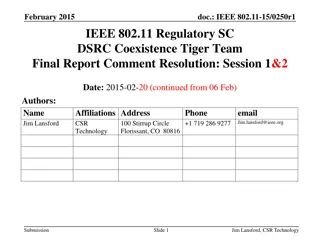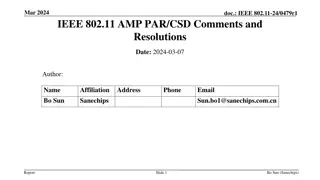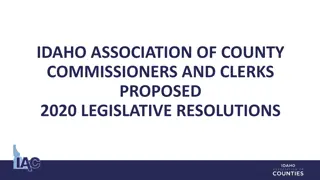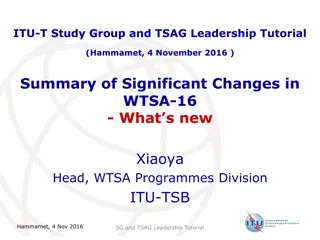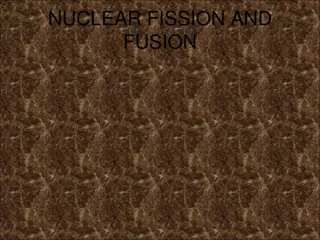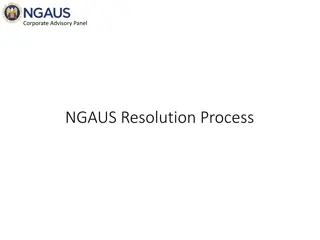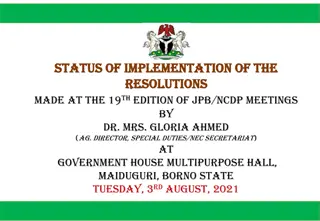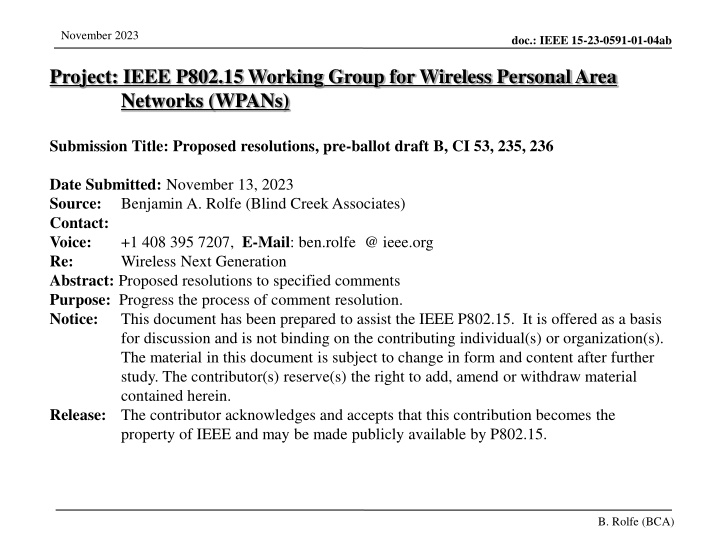
IEEE P802.15 Working Group Proposed Resolutions
In this document submitted to the IEEE P802.15 Working Group, proposed resolutions for comments related to wireless personal area networks (WPANs) are discussed. The resolutions aim to address inconsistencies and provide clarity in the standards.
Uploaded on | 1 Views
Download Presentation

Please find below an Image/Link to download the presentation.
The content on the website is provided AS IS for your information and personal use only. It may not be sold, licensed, or shared on other websites without obtaining consent from the author. If you encounter any issues during the download, it is possible that the publisher has removed the file from their server.
You are allowed to download the files provided on this website for personal or commercial use, subject to the condition that they are used lawfully. All files are the property of their respective owners.
The content on the website is provided AS IS for your information and personal use only. It may not be sold, licensed, or shared on other websites without obtaining consent from the author.
E N D
Presentation Transcript
November 2023 doc.: IEEE 15-23-0591-01-04ab Project: IEEE P802.15 Working Group for Wireless Personal Area Networks (WPANs) Submission Title: Proposed resolutions, pre-ballot draft B, CI 53, 235, 236 Date Submitted: November 13, 2023 Source: Benjamin A. Rolfe (Blind Creek Associates) Contact: Voice: +1 408 395 7207, E-Mail: ben.rolfe @ ieee.org Re: Wireless Next Generation Abstract: Proposed resolutions to specified comments Purpose: Progress the process of comment resolution. Notice: This document has been prepared to assist the IEEE P802.15. It is offered as a basis for discussion and is not binding on the contributing individual(s) or organization(s). The material in this document is subject to change in form and content after further study. The contributor(s) reserve(s) the right to add, amend or withdraw material contained herein. Release: The contributor acknowledges and accepts that this contribution becomes the property of IEEE and may be made publicly available by P802.15. B. Rolfe (BCA)
November 2023 doc.: IEEE 15-23-0591-01-04ab Proposed Resolutions Comments: 53, 235, 236 B. Rolfe (BCA)
November 2023 doc.: IEEE 15-23-0591-01-04ab Comment 53 Index # Pag Sub- clause Line # Comment Proposed Change Propose d Res Disposition Detail e 53 91 10.37.4. 1 30 If short address are used by both sides and PAN ID compression is 1 seems contradict with settings allowed in baseline table 7-2 as in comment Revised Change text to: The PAN ID Compression field shall be set to 1 and the PAN ID fields set to the value of macPanId according to Table 7-2 Commenter is correct, text is not consistent with the base standard definition of PAN ID compression: When both address fields are present, the only case in which PAN ID can be completely elided is when both address fields contain extended addresses Recommendation 1: refer to the PAN ID compression rules specified in the base standard (Table 7-2 in current Rev E draft). B. Rolfe (BCA)
November 2023 doc.: IEEE 15-23-0591-01-04ab Comment 53 Further discussion: Alternate approach If the intention is to always elide the PAN ID regardless of the contents of the source and destination addressing fields, the Multi-purpose frame provides this capability Could revise to use the MP frame instead of the command frame (request and response) Requires some effort to update text to us the MP frame (may be multiple updates needed) Add an MLME IE(s) to carry the content B. Rolfe (BCA)
November 2023 doc.: IEEE 15-23-0591-01-04ab Comment #235: Option A Index # 235 103 11.1.3. Pag e Sub- clause Lin e # 6 The span of the channels should be limited to reduce the effect on other unlicensed technologies. In 2.4 GHz, only 80 MHz of unlicensed spectrum is used. Comment Proposed Change Proposed Res Rejected Disposition Detail Reduce the 500 MHz span in 6GHz to a reasonable value ( < TBD MHz) 15 Two proposed resolutions Reject or Revised B. Rolfe (BCA)
Comment #235: Discussion There is no advantage to reducing the number of available channels. Such limit impedes rather than enhances coexistence possibilities Actual RF environments will vary greatly. Overlapping 802.11 LANs are only one of the possible systems with which to share Other examples include NR-U based networks and proprietary U-NII systems The availability of more channels increases the potential for frequency agility and thus frequency separation (avoidance) The assumption that some parts of the band will not be used by 802.11 RLANs is a transient condition. Based on assumption close to the band edge is hard It is only hard until it s been done. 802.11 implementations will take full advantage of all the spectrum allowed by regulations The notion that if we don t define it, it won t happen, is unrealistic. 802 is not a regulatory body (it is allowed, it will happen) Implementations are more likely to channelize the band in a well defined (predictable and consistent) manner when we have a standard. The combined flexibility with well defined channel plan enables a greater range of effective coexistence strategies. November 2023 doc.: IEEE 15-23-0591-01-04ab B. Rolfe (BCA) Slide 6
November 2023 doc.: IEEE 15-23-0591-01-04ab Comment #235: Option A Index # 235 103 11.1.3. Pag e Sub- clause Lin e # 6 The span of the channels should be limited to reduce the effect on other unlicensed technologies. In 2.4 GHz, only 80 MHz of unlicensed spectrum is used. Comment Proposed Change Proposed Res Rejected The group disagrees with the comment. The restrictions would reduce the options available for detecting and avoiding other services using the same band (more channels == more options). This would have a detrimental effect on the ability for coexistence. Disposition Detail Reduce the 500 MHz span in 6GHz to a reasonable value ( < TBD MHz) 15 B. Rolfe (BCA)
November 2023 doc.: IEEE 15-23-0591-01-04ab Comment #235: Option B Index # 235 103 11.1.3. Pag e Sub- clause Lin e # 6 The span of the channels should be limited to reduce the effect on other unlicensed technologies. In 2.4 GHz, only 80 MHz of unlicensed spectrum is used. Comment Proposed Change Proposed Res Revised Disposition Detail Reduce the 500 MHz span in 6GHz to a reasonable value ( < TBD MHz) Add informative text: In some deployment environments, it may be desirable to avoid certain channels to avoid interference to or from other services; implementations are encouraged to adapt the use of specific channels to improve coexistence with other services. 15 B. Rolfe (BCA)
Comment #236: Discussion November 2023 doc.: IEEE 15-23-0591-01-04ab Index # 236 Pag e 103 11.1.3.1 5 Sub- clause Lin e # 6 Comment Proposed Change As in comment Proposed Res Rejected Disposition Detail in 6 GHz, there is a list of Preferred Scanning channels where discovery happens for 802.11. Those channels (in 802.11 nomenclature) are: 5, 21, 37, 53, 69, 85. Narrowband should exclude those 20 MHz channels from the allowed channel list. . Largely the same rationale as #235: There s no advantage to reducing the number of available channels in general More channels == more chance to adapt and improve coexistence both ways etc Overlapping 802.11 LANs are only one of many other systems that may be present in the shared spectrum However we do know something about 802.11 as it exists today (11ax, 11be) It may be helpful to offer information that may be useful in some (many) environments B. Rolfe (BCA) Slide 9
November 2023 doc.: IEEE 15-23-0591-01-04ab Comment # 236: Option A Comment Proposed Change Index # 236 Pag e 103 11.1.3.1 5 Sub- clause Lin e # 6 Proposed Res Rejected Disposition Detail in 6 GHz, there is a list of Preferred Scanning channels where discovery happens for 802.11. Those channels (in 802.11 nomenclature) are: 5, 21, 37, 53, 69, 85. Narrowband should exclude those 20 MHz channels from the allowed channel list. As in comment The group disagrees with the comment. The proposed restriction would not inherently improve coexistence. More channel flexibility provides more options for avoiding interference from and to other services operating in the radio sphere of influence. 802.11 is not the only service that may be sharing the band, nor is it always the case that 802.11 networks will be operating in the radio sphere of influence. B. Rolfe (BCA)
November 2023 doc.: IEEE 15-23-0591-01-04ab Comment # 236: Option B Comment Proposed Change Index # 236 Pag e 103 11.1.3.1 5 Sub- clause Lin e # 6 Proposed Res Revised Disposition Detail in 6 GHz, there is a list of Preferred Scanning channels where discovery happens for 802.11. Those channels (in 802.11 nomenclature) are: 5, 21, 37, 53, 69, 85. Narrowband should exclude those 20 MHz channels from the allowed channel list. As in comment Add informative text: In some deployment it may be advantages to avoid specific channels which overlap the Preferred Scanning channels used by 802.11 when overlapping 802.11 networks are detected in the same band and radio sphere of influence. Discussion: Need more detail on where to add the informative note to be a complete resolution; should provide specific frequency range of each of the 802.11 channels which may be desirable to avoid. B. Rolfe (BCA)
November 2023 doc.: IEEE 15-23-0591-01-04ab Comment # 236: Option C Comment Proposed Change Index # 236 Pag e 103 11.1.3.1 5 Sub- clause Lin e # 6 Proposed Res Rejected Disposition Detail in 6 GHz, there is a list of Preferred Scanning channels where discovery happens for 802.11. Those channels (in 802.11 nomenclature) are: 5, 21, 37, 53, 69, 85. Narrowband should exclude those 20 MHz channels from the allowed channel list. As in comment The commenter does not provide sufficient technical information to make a change, specifically, how the 802.11 channels identified corresponds to the channel plan contained in the draft B. Rolfe (BCA)
November 2023 doc.: IEEE 15-23-0591-01-04ab Conclusion (to be updated) Comment #53: 1. [ ] 2. [ ] Comment #235: A. [ ] B. [ ] Comment # 236: A. [ ] B. [ ] C. [ ] B. Rolfe (BCA) Slide 13

